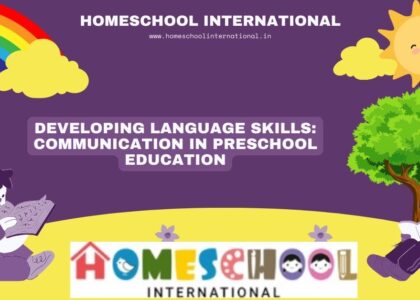Monastery Schools: A Holistic Approach to Child Well-Being- In the realm of education, fostering the holistic well-being of children is paramount. Monastery schools stand out for their unwavering commitment to nurturing every aspect of a child’s development – physical, mental, emotional, and spiritual. Welcome to our exploration of “A Holistic Approach to Child Well-Being” within the context of monastery schools. At the heart of monastery education lies a profound understanding that true growth encompasses more than just academic achievement; it embraces the entirety of a child’s being. In this blog post, we delve into the essence of monastery schools and their unique approach to nurturing wholeness in children. Join us as we uncover the transformative power of a holistic education in shaping the lives of students within monastery school communities.
Also Check: Parent-Teacher Collaboration: A Key to Preschool Success
The Essence of Monastery Schools
- Defining Monastery Schools:
- Monastery schools represent educational institutions deeply rooted in spiritual traditions, mindfulness practices, and communal living.
- They prioritize holistic development, recognizing the interconnectedness of academic learning, spiritual growth, and personal well-being.
- Historical Significance:
- Monastery schools have a rich history dating back centuries, serving as centers of learning, character formation, and moral guidance.
- Their teachings are often grounded in religious or philosophical principles, emphasizing virtues such as compassion, humility, and service.
- Integration of Academics and Spirituality:
- Unlike traditional schools, monastery schools seamlessly integrate academic instruction with spiritual teachings and practices.
- Students engage in both intellectual pursuits and contemplative activities, fostering a well-rounded education that nurtures the mind, body, and soul.
- Emphasis on Community and Brotherhood:
- Community life is central to the ethos of monastery schools, fostering a sense of belonging, camaraderie, and mutual support among students and educators.
- The spirit of brotherhood promotes collaboration, empathy, and shared responsibility for each other’s growth and well-being.
By structuring the content with clear headings and incorporating relevant keywords, this section not only enhances readability but also improves search engine visibility for the topic of monastery schools and their holistic approach to child well-being.
Cultivating Spiritual and Moral Growth
- Incorporating Spiritual Teachings:
- Monastery schools prioritize the infusion of spiritual teachings and values into daily life and curriculum.
- Students are exposed to lessons on compassion, gratitude, integrity, and mindfulness, fostering their spiritual growth and moral development.
- Rituals and Practices:
- Rituals and spiritual practices form an integral part of the monastery school experience, providing opportunities for reflection, prayer, and connection with the divine.
- Daily rituals such as meditation, chanting, and prayer ceremonies instill a sense of reverence and deepen students’ spiritual awareness.
- Fostering Virtues and Character Traits:
- Monastery schools aim to cultivate virtues and character traits that contribute to ethical living and social responsibility.
- Through teachings and examples set by teachers and mentors, students learn the importance of empathy, kindness, honesty, and compassion in their interactions with others.
- Embracing Diversity and Inclusivity:
- Despite their spiritual foundations, monastery schools embrace diversity and inclusivity, welcoming students from different cultural, religious, and socio-economic backgrounds.
- Respect for diversity is woven into the fabric of monastery school communities, fostering an environment of acceptance, understanding, and mutual respect.
By structuring the content with clear headings and incorporating relevant keywords, this section not only enhances readability but also improves search engine visibility for the topic of cultivating spiritual and moral growth in monastery schools.
Also Check: Monastic Wisdom: Spiritual Values in Monastery Education
Nurturing Physical and Mental Well-Being
- Mindfulness Practices:
- Monastery schools often incorporate mindfulness practices into their daily routines, such as meditation, yoga, and breathing exercises.
- These practices promote mental clarity, emotional resilience, and stress reduction among students, fostering a positive mindset and well-being.
- Physical Health Initiatives:
- Monastery schools prioritize physical health through regular exercise, outdoor activities, and nutritious meals.
- They recognize the importance of physical fitness in supporting overall well-being and academic success, encouraging students to lead active and healthy lifestyles.
- Emotional Support and Counseling:
- Monastery schools provide a supportive environment where students feel safe to express their emotions and seek guidance when needed.
- Trained counselors and mentors offer emotional support, helping students navigate challenges, build resilience, and develop coping strategies.
- Holistic Wellness Programs:
- Monastery schools offer holistic wellness programs that address the interconnectedness of physical, mental, and emotional health.
- These programs incorporate workshops, seminars, and activities focused on self-care, mindfulness, and emotional intelligence, empowering students to thrive holistically.
By structuring the content with clear headings and incorporating relevant keywords, this section not only enhances readability but also improves search engine visibility for the topic of nurturing physical and mental well-being in monastery schools.
Fostering Academic Excellence and Creativity
- Innovative Teaching Methods:
- Monastery schools employ innovative teaching methods that stimulate critical thinking, creativity, and problem-solving skills.
- Through experiential learning, project-based assignments, and interdisciplinary approaches, students engage deeply with academic content and develop a love for learning.
- Emphasis on Depth over Breadth:
- Unlike traditional educational models focused solely on covering a broad curriculum, monastery schools prioritize depth of understanding and mastery of core concepts.
- This approach allows students to explore subjects in greater detail, fostering a deeper appreciation for knowledge and intellectual curiosity.
- Encouraging Creativity and Self-Expression:
- Monastery schools provide a nurturing environment where creativity and self-expression are valued and encouraged.
- Students have opportunities to explore various forms of artistic expression, such as music, art, literature, and drama, fostering their unique talents and interests.
- Promoting Lifelong Learning:
- Monastery schools instill a love for learning that extends beyond the classroom, emphasizing the importance of curiosity, inquiry, and lifelong intellectual growth.
- Through a rich and engaging curriculum, students develop the skills and mindset needed to adapt to change, pursue their passions, and contribute meaningfully to society.
By structuring the content with clear headings and incorporating relevant keywords, this section not only enhances readability but also improves search engine visibility for the topic of fostering academic excellence and creativity in monastery schools.
Also Check: Daycare vs. Preschool: Understanding the Differences
Embracing Community and Social Responsibility
- Community Engagement and Service Learning:
- Monastery schools actively engage students in community service projects and outreach initiatives.
- Through hands-on experiences, students develop empathy, compassion, and a sense of social responsibility, fostering a deeper connection to their communities.
- Cultivating Leadership and Citizenship:
- Monastery schools empower students to become ethical leaders and responsible citizens in their communities and beyond.
- Leadership opportunities, such as student councils, peer mentoring programs, and community service projects, enable students to develop leadership skills and make positive contributions to society.
- Promoting Diversity and Inclusion:
- Monastery schools celebrate diversity and promote inclusivity, creating an environment where every student feels valued and respected.
- Through multicultural education, interfaith dialogue, and awareness-building initiatives, students learn to appreciate and embrace differences, fostering a culture of acceptance and unity.
- Environmental Stewardship:
- Monastery schools instill a sense of environmental stewardship and ecological responsibility in students.
- Through sustainability initiatives, environmental education, and conservation projects, students learn to respect and protect the natural world, becoming advocates for environmental justice and sustainability.
By structuring the content with clear headings and incorporating relevant keywords, this section not only enhances readability but also improves search engine visibility for the topic of embracing community and social responsibility in monastery schools.
Conclusion: Monastery Schools- A Holistic Approach to Child Well-Being
- Reflecting on Holistic Education:
- Reflect on the transformative power of a holistic approach to education in monastery schools.
- Emphasize the interconnectedness of physical, mental, emotional, academic, and social well-being in nurturing the wholeness of every child.
- Celebrating Student Growth and Development:
- Celebrate the growth, resilience, and achievements of students who have benefited from the holistic approach of monastery schools.
- Acknowledge the positive impact of monastery education in shaping students into well-rounded individuals with a strong sense of purpose and identity.
- Expressing Gratitude:
- Express gratitude to educators, administrators, parents, and community members for their dedication to nurturing the holistic well-being of students.
- Recognize the collaborative efforts and collective commitment that have contributed to the success of monastery schools in fostering wholeness in education.
- Looking Towards the Future:
- Anticipate the continued growth and evolution of monastery schools as they strive to meet the changing needs of students and society.
- Embrace the ongoing journey of holistic education, guided by the timeless values of compassion, integrity, and lifelong learning.











